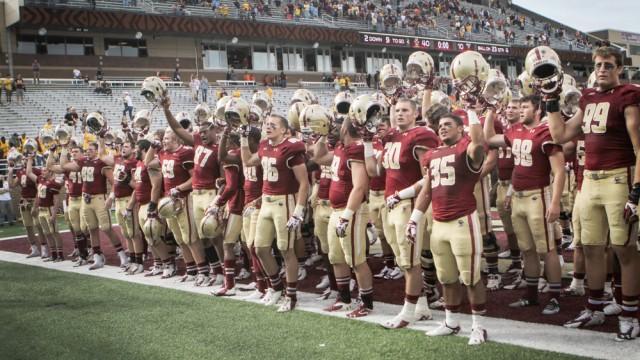
After voting against the measure that passed 79-1 with Power Five conference schools, BC Athletics is choosing to cover the full cost of attendance for full scholarship student athletes as early as August.
Boston College Director of Athletics Brad Bates confirmed that the University intends to cover the full cost-of-attendance for full scholarship student-athletes—as calculated by the Office of Student Services—as early as August, according to an article published by ESPN. This decision comes less than a week after BC cast the only vote against an NCAA measure, passed 79-1, that will allow universities to issue stipends to student athletes on full scholarship, covering their full calculated cost-of-attendance beyond tuition, housing, books, and food. The stipend will cover cost-of-living expenses, which include school supplies, laundry, and travel back home, among other minor expenses, as calculated by the University.
Bates said that BC will comply with the legislation, but wanted to raise certain issues that were found within it, notably furthering the distinction between regular students and student-athletes, as well as putting an unnecessary burden on financially strapped athletic departments. The cost-of-attendance gap at BC is reported to be around $1,200, which is tied for the lowest in the Atlantic Coast Conference (ACC) with the University of Notre Dame. The higher amounts in the ACC hover around $5,000.
The ESPN story cited a report published by the NCAA in August 2014, which claimed that only 20 Football Bowl Subdivision (FBS) programs generated a profit. More than 100 other FBS programs relied heavily on subsidies from their universities.
“A lot of those subsidies come from student fees at many institutions,” Bates said in a phone interview from earlier this week. “So with increased costs of higher education, we keep passing legislation that’s increasing our costs. We’re putting a lot of pressure on athletic departments to really seriously look into eliminating sports, which ultimately hurts student-athletes rather than helps.”
Bates added that 15 schools have eliminated a combined 66 sports since 2010, despite the fact that the NCAA has lucrative television and sponsorship deals. The University of Alabama-Birmingham became the first school to eliminate football—the sport that generally raises the most revenue for universities—since Pacific University in 1995.
Additionally, Bates was worried about the fact that cost-of-attendance figures might serve as a recruiting advantage, offering a hypothetical scenario in which football powerhouse University of Alabama would not let its rival, Auburn University, surpass its institution’s cost of attendance.
“With the research we’ve done, we’ve seen the highest amount of difference in cost of attendance is a little over $6,000,” Bates said on the Tim Brando Show on Sirius XM. “Some schools are going to be able to give the students over $6,000 per student per year. Other schools are less than $1,000. There’s already an inherent disadvantage, based on what your cost-of-attendance is.”
The cost-of-attendance legislation allows collegiate institutions to offer, on average, $2,000 to $5,000 to its student-athletes in addition to the traditional full scholarship. Bates agrees that covering full cost-of-attendance is beneficial in principle, but had concerns that the NCAA rushed its decision to pass this legislation.
“I’m not sure that everyone fully comprehended the types of issues we’re talking about right now,” Bates said.
Featured Image by Emily Fahey / Heights Senior Staff